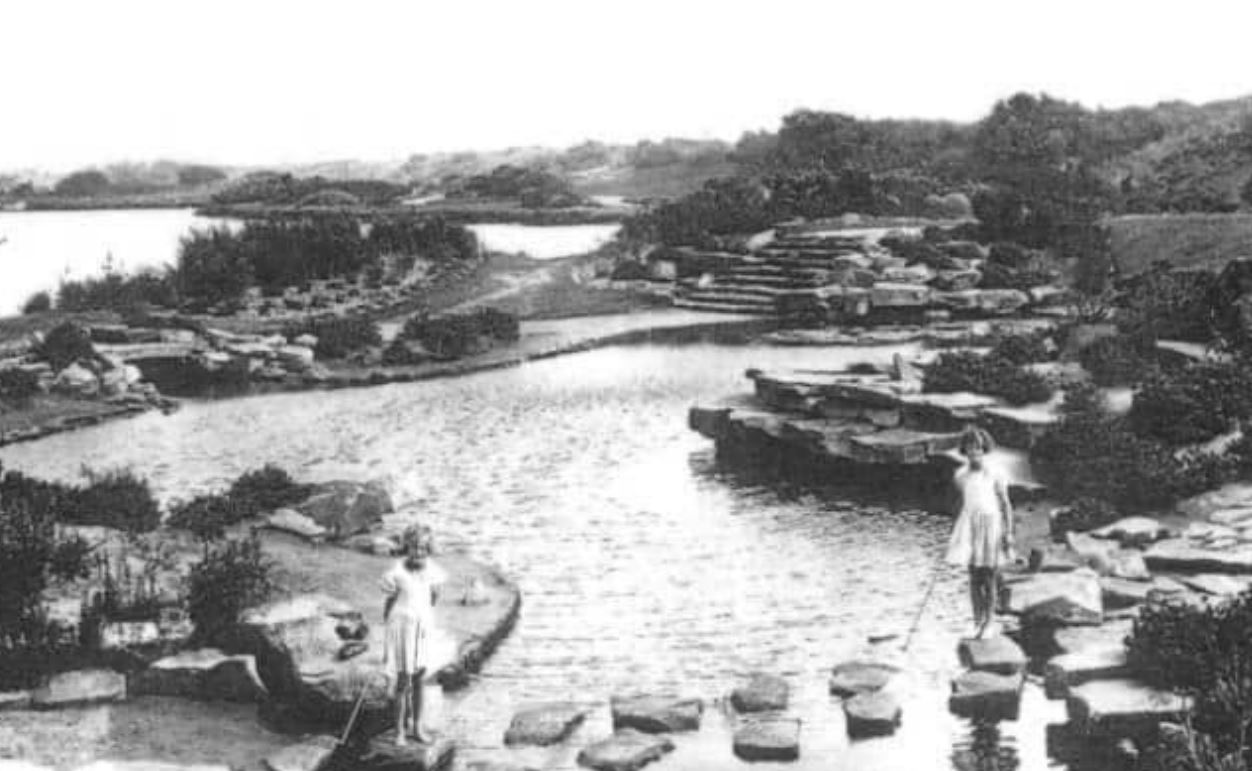The initial idea for Fairhaven Lakes and Gardens was first conceived in 1890 by Thomas Riley. The idea was to establish a hotel and recreational provision which offered spaciousness, clean air and community facilities with extensive views of the sea over the estuary. In 1892, a lease agreement was established with Clifton Estate for 264 acres of land along the coast between Lytham and St Annes.
The land was split into two sections; section A for development and section B for recreation.
After a temporary sea wall was constructed in 1893, the lake was formed and was filled by an existing pipe. The lake was officially declared open in August 1893 and in 1895 the Fairhaven Estate Company was established to take over Thomas Riley’s role.
In 1896, the Fairhaven Estate Company developed plans for a golf course to frame the lake and the area to the West. Therefore, the original golf clubhouse was constructed on site. In 1901, the Pagoda Boathouse was constructed.
Numerous works to the Lake and its surroundings were completed in the early 1900’s to improve the landscape such as restoration of the promenade and installation of ornamental planting diving boards and bridges. The most The initial idea for Fairhaven Lakes and Gardens was first conceived in 1890 by Thomas Riley. The idea was to establish a hotel and recreational provision which offered spaciousness, clean air and community facilities with extensive views of the sea over the estuary. In 1892, a lease agreement was established with Clifton Estate for 264 acres of land along the coast between Lytham and St Annes. The land was split into two sections; section A for development and section B for recreation.
After a temporary sea wall was constructed in 1893, the lake was formed and was filled by an existing pipe. The lake was officially declared open in August 1893 and in 1895 the Fairhaven Estate Company was established to take over Thomas Riley’s role.
In 1896, the Fairhaven Estate Company developed plans for a golf course to frame the lake and the area to the West. Therefore, the original golf clubhouse was constructed on site.
In 1901, the Pagoda Boathouse was constructed. Numerous works to the Lake and its surroundings were completed in the early 1900’s to improve the landscape such as restoration of the promenade and installation of ornamental planting diving boards and bridges. The most significant installations were 17 tennis courts, a bowling green, a croquet lawn and a small sports ground, which made Fairhaven Lake and Gardens a popular site for recreational activity.
During the war years, the Lake remained opened but suffered from a lack of resources which took its toll on the management and maintenance of the site. Around 1920, after the war, Fairhaven Lake and Gardens underwent its second phase of major developments, starting with four new tennis courts and an extension to the pavilion and in 1921, the construction of a second boathouse designed by Isaac Dixon & Co. In 1922, after Lytham and St. Annes Council joined, Fairhaven Lake and Gardens was sold to the council for £34,000. A well-known philanthropist in Lancashire, Lord Ashton, helped the council financially to acquire the park, hence the park was renamed to Ashton Marine Park.
The next major development came in 1924, when Mawson and Son of Lancaster, produced a masterplan for the layout of Ashton Marine Park. Mawson and Son were the first international firm of landscape architects and town planners, as well as Thomas Mawson being the first president of the Landscape Institute. They originally proposed a number of improvements, including: the Lake would be enlarged from 12 to 25 hectares to increase opportunities for water recreation; the recreation offer expanded; a new mini golf course and an open-air swimming pool opened and that the South side of the park would offer a natural space, for
visitors to enjoy shorelines and plantations. Works were complete by 1926 and officially opened by Lord Derby.

